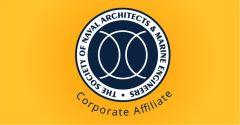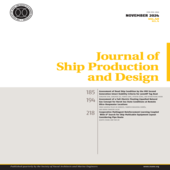 Bill Garzke to Step Down from Co-Chair of the SNAME Marine Forensics Committee
Bill Garzke to Step Down from Co-Chair of the SNAME Marine Forensics Committee
This week I want to spotlight Bill Garzke for his determination and hard work over the past 27 years as founder, Chair, and Co-Chair of the SNAME Marine Forensics Committee. While Bill has notified us that he intends to step down as Co-Chair, he has reassured us that he will continue to be involved with the committee. The following is a little history of Bill’s work with the committee since its founding. On behalf of SNAME I express my sincere thanks to Bill for his leadership and commitment to SNAME and the Marine Forensics Committee.
William “Bill” H. Garzke, Jr. has been a dedicated member of the Society of Naval Architects and Marine Engineers since he began membership in the Society in 1959. He is both a Fellow and Honorary Vice President. During this tenure, he has been an active member of SNAME at both the local and national level and is involved in many of our programs.
Bill started his interest in forensics with a trilogy of books on battleships, designed and constructed from 1930-1945. He and Bob Dulin studied their designs to identify features which enhanced or detracted from their performance, based on their service. The results of these efforts, and a later contribution, are captured in four books published by the Naval Institute Press which represent the most comprehensive and authoritative documentation of these vessel types. In 1989, the famed oceanographer Dr. Robert Ballard discovered the wreck of the German Battleship Bismarck. Having knowledge of the Garzke/Dulin publications on battleships, Ballard and the National Geographic Society called upon their consultation when the time came to publish findings in the book by Ballard, "Discovery of the Battleship Bismarck" in 1991. With the understanding gained in the importance of studying the performance of historical vessels in 1994, Bill had the vision for a new element of study in naval architecture and dimension for SNAME. He petitioned SNAME to include forensics in its T&R Program. This effort started in March 1995 with the Marine Forensics Panel (SD-7) within the Ship Design Committee, with Bill serving as its Chair. ASNE also participated in this initial effort, gaining international acclaim. This was followed by the Royal Institution of Naval Architects (RINA) in 1996. In 1997, Garzke and David K. Brown (RINA's representative), gave a marine forensics report to a Titanic Symposium in Belfast, Northern Ireland that was hosted by the Institute of Marine Engineers. In 2005, the Marine Technology Society began participation in the work of the SD-7 Panel, along with the National Geographic Society serving in consultation. Ultimately, due to the success of activity and interest, SD-7 morphed to the Committee level as the Marine Forensics Committee with eight active Panels and over 100 members we know today. This has been an extremely popular Committee within the SNAME T&R Program.
There have been other interesting participants indicating respect for the technical expertise of the Committee. One example is Bill’s engagement with the famous movie director and underwater explorer James Cameron and his interest in the Titanic, which he ultimately made into one of the most famous movies of all time, and his May 2002 exploration of the Bismarck wreck. In 2003, Garzke supported him in the presentation on his findings from the wreck of Bismarck to the Smithsonian Associates of the Smithsonian Museum. As a result of this work, Cameron himself became a member of the Panel. As another example George Tulloch, president of RMS Titanic, who claimed to be the salvor of the wreck, asked Bill to join the 1996 expedition that was to recover a large plate section of Titanic and other samples of plating.
As the SD-7 Panel Chair, Bill was challenged by the need to avoid legal entanglements in the investigations of current or past ship casualties or sinkings. Nevertheless, he was able to have the panel conduct other investigations of very famous and interesting vessels including the Titanic, Lusitania, Andrea Doria, HMS Prince of Wales, DKM Bismarck, USS Maine and USS Yorktown (CV-5). Bill has always carefully selected individuals with the proper experience and credentials in his studies to insure that these investigations would be thorough and accurate. In the case of Titanic, he made two visits to the wreck site and with the help of experts that he chose, the result was a comprehensive descriptive scenario of her loss. In the case of the Prince of Wales, he worked with the last surviving officer and divers who had explored the wreck and determined the cause of its loss. In Andrea Doria, he worked with one of the survivors who had written a book on this ship and its loss. With all these activities and more underway over the years, Bill continued to capture the important features of investigations in publications, many of which earned SNAME awards such as following:
- 1997 Annual Meeting paper on the Titanic was awarded the Linnard Prize
- 1995 paper on the Titanic and Lusitania received the Cochrane Award
- 1994 article on the Bismarck in Warship International was cited as the best article that year
- 2002 Book on the Titanic published by SNAME
- T&R Bulletin "Guidelines for Marine Forensics Investigations."
Thank you for your hard work and dedication to the industry Bill!












